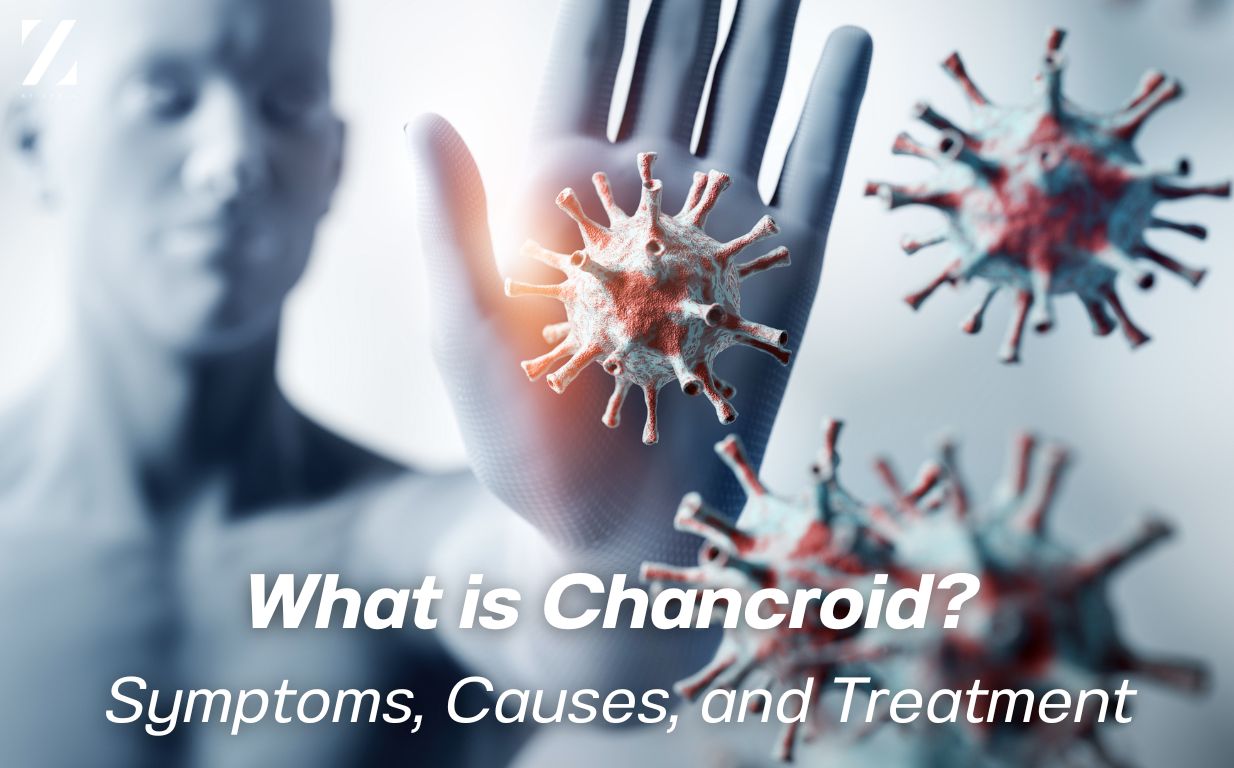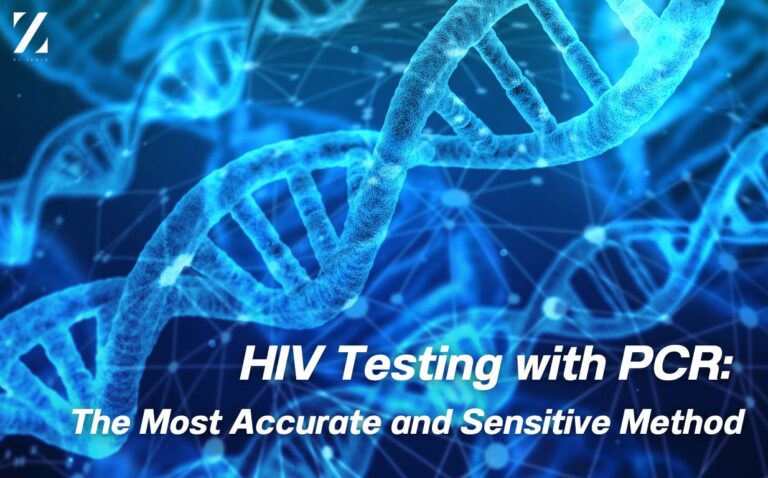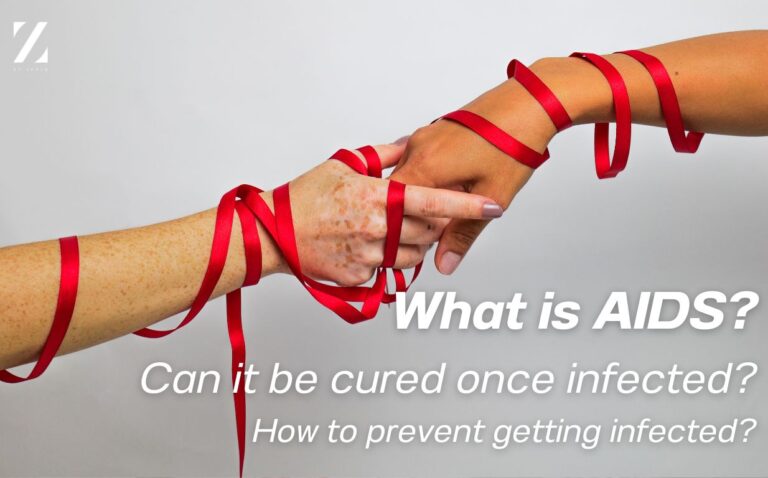Many people might mistakenly think that sores on the genital area are just ordinary wounds that will heal on their own. However, did you know these could be a sign of Chancroid, a sexually transmitted infection (STI) that is more serious than it seems? This article will clarify what Chancroid is, what causes it, its symptoms, and how it is treated.
What is Chancroid?
Chancroid is a sexually transmitted infection caused by a bacterium called Haemophilus Ducreyi. It typically causes sores on the genital area in both men and women, but can also appear in other areas that come into contact with the bacteria, such as the anus or mouth. The sores are often small, soft, and irregular in shape, and they usually appear a few days after contact with the infected area. They can be painful to touch.
What Causes Chancroid and How Is It Transmitted?
Chancroid is caused by direct contact with an infected sore. The bacteria can enter the body through broken skin or mucous membranes in areas like the genitals, anus, mouth, or even the eyes. Here are some ways Chancroid can be transmitted:
- Unprotected Sex: Having sex without using a condom is the main way to contract Chancroid, as the bacteria can easily pass from one person to another during direct contact with sores.
- Multiple Sexual Partners: Having more than one sexual partner increases the likelihood of encountering the bacteria.
- Rough Sex: Vigorous sexual activity, especially anal sex, can lead to skin abrasions, making it easier for bacteria to enter the body.
Symptoms of Chancroid
Chancroid usually shows symptoms within 3 to 10 days after exposure to the bacteria. The primary symptom is an open sore in the genital, anal, or mouth area. These sores are often painful, swollen, and may ooze pus. Other symptoms can include:
- Unusual vaginal discharge
- Painful urination
- Body aches
- Swollen lymph nodes in the groin area
If you notice a painful genital sore, it’s important to see a doctor as soon as possible, as Chancroid is a serious STI that needs to be treated promptly to avoid long-term health issues.
Gender Differences in Chancroid Symptoms
The symptoms of Chancroid may differ slightly between men and women:
- In Men: It typically starts as small red bumps on the tip of the penis or scrotum, which may develop into painful ulcers within 1-2 days.
- In Women: The symptoms usually appear as multiple small red bumps on the outer genital area, such as the labia, thighs, or groin. The pain may be less severe compared to men.
Chancroid vs. Syphilis vs. Herpes: What’s the Difference?
Many STIs have similar early symptoms, which can cause confusion. Chancroid, often referred to as “soft chancre,” shares similar ulcer characteristics with syphilis, but there are important differences:
- Chancroid: Caused by Haemophilus Ducreyi, it typically presents small, irregular, painful ulcers with a yellowish discharge that appear within 3-5 days of exposure.
- Syphilis: Caused by Treponema pallidum, the sores from syphilis are usually single, firm, and painless in the early stage. They typically appear 2-8 weeks after exposure.
- Herpes: Caused by the herpes simplex virus, herpes lesions are often grouped fluid-filled blisters that break open, causing painful, weeping sores.
Can Chancroid Heal on Its Own?
While the body’s immune system may eventually fight off the bacteria, Chancroid will likely take a long time to heal on its own and can lead to complications such as severe infections, swollen lymph nodes, or noticeable scarring. Therefore, it is highly recommended to seek treatment from a healthcare provider for appropriate care.
Complications of Untreated Chancroid
If left untreated, Chancroid can lead to several serious health issues, including:
- Swollen Lymph Nodes: The lymph nodes in the groin may become swollen, painful, and may discharge pus.
- Secondary Infections: Chancroid sores can increase the risk of contracting other STIs, including HIV.
- Scar Tissue: Chancroid may cause scarring, especially in the genital area.
- Urethral Issues: In some cases, the infection may spread to the urethra, causing inflammation, injury, or leakage.
- Deformed Genitals: Severe cases of Chancroid can lead to changes in the shape of the genital area.
How is Chancroid Treated?
exam and lab tests, the doctor will prescribe the appropriate antibiotic, such as Azithromycin, Ciprofloxacin, or Ceftriaxone.
How Long Does It Take for Chancroid to Heal?
The healing time for Chancroid depends on the size of the ulcers. Smaller sores usually heal within 3-7 days, while larger sores may take up to 2 weeks.
How to Prevent Chancroid
Chancroid is preventable by following these steps:
- Avoid having sex with someone who has visible sores.
- Always use condoms during sex to reduce the risk of direct contact with infected areas.
- Limit the number of sexual partners to reduce exposure to the bacteria.
- Keep the genital area clean by regularly washing with soap and water.
- Regularly check for sores or unusual symptoms on the genital area and see a doctor if any are found.
- Get tested for STIs regularly, especially for people at higher risk.
Conclusion
Chancroid is a serious STI caused by Haemophilus Ducreyi, leading to painful, pus-filled sores on the genital area. If left untreated, it can cause long-term health complications. Safe sex practices, such as using condoms and limiting sexual partners, can prevent Chancroid. If you suspect you have this condition or want to get tested confidentially, Z by Zeniq, we offer expert care and treatment options.




